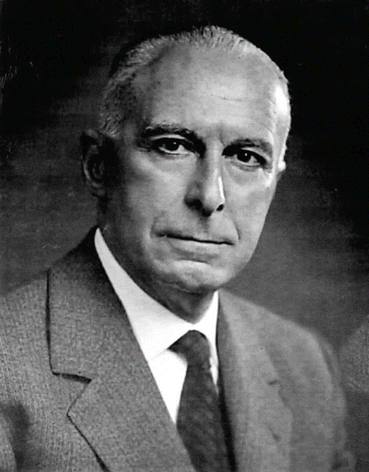(1)
Department of Plastic Surgery, University Hospital Leiden, Leiden, The Netherlands

It is quite remarkable how many of the pioneers in the field of plastic surgery came from non-medical families. In this respect, Sanvenero-Rosselli was no exception for his father was a lawyer who followed the profession to which the family had inclined for several generations.
Sanvenero-Rosselli was born on 7 September 1897 in Savona, a busy port lying about 40 km to the west of Genoa, at the foot of the Ligurian Alps. It was there he grew up, the eldest of four children. He had two brothers, both of whom were to become lawyers in the family tradition, and one sister, who became the mother of one of Italy’s present leading plastic surgeons. His father’s untimely death left Sanvenero largely responsible for the family and life was far from easy. Although the income from government bonds was adequate at first, these were considerably devalued during the Great War, so that sacrifices had to be made when Sanvenero began his medical studies at the University of Genoa in 1915. His student days spanned the First World War, and for 3 years, up until 1918, he served as a medical orderly at the front. Despite this, he returned regularly to Genoa to take his exams so that he was able to complete his training within the prescribed period of 6 years and graduated in 1921.
During the War, he was thrown into contact with many cases of facial trauma, in which he soon developed a deep interest. From 1921 to 1926, he worked as an assistant to Professor Gavello in the ENT Department of the University of Turin. Gavello was himself involved in reconstructive surgery of the head and neck. In 1926, he was invited to lecture on this subject in a course in Madrid. Technically, Sanvenero was by now an ENT Surgeon, and although he had a brass plate made, he delayed putting it up and beginning a private practice, as his heart was not in a conventional ENT career. His mother and her other children were still somewhat dependent on Sanvenero, but he managed to shake himself free of the yoke of otitis (which was the subject of his first publication), ozena and tonsillitis and escaped to Paris where he had resolved to broaden his experience of the reconstructive work which he loved.
Besides a scholarship from Gavello’s department, he was paid for lecturing in the ENT Department at the University of Paris, and thus he managed to make ends meet, whilst employed as a monitor in the ENT Clinic of Pierre Sebileau. The next step forward was the acquisition of a paid post as assistant to the bushy, black-bearded Fernand Lemaitre at the Clinique Internationale d’ORL et de Chirurgie Plastique de la Face. Lemaitre had been in charge of a large maxillofacial unit at Vichy where he had made the acquaintance of several allied surgeons, including Blair and Ivy from America. This acquaintance inspired him to invite the leading plastic surgeons of the time to lecture and demonstrate at a yearly course, which he organised in Paris from 1925 to 1928. Sanvenero-Rosselli availed himself of the opportunity to participate in the course in 1927 and 1928, and he was fortunate enough to meet such men as Victor Veau from Paris, Gillies from London and Ferris Smith, Ivy, Blair and Sheehan all from America, as well as Jacques Joseph from Berlin. During one of these courses, Sanvenero-Rosselli assisted Ferris Smith at several operations and, in general, made such an impression upon the latter that he made a gift of his surgical instruments to the young man. Sheehan too realised his worth and asked Sanvenero-Rosselli to accompany him on a scientific and medical tour of Spain in 1927. But in his turn, Sanvenero always acknowledged Ferris Smith and Sheehan as the two men who inspired him to turn from ENT to plastic surgery. Paris then was the turning point in his career, as it has been to countless others.
One morning in 1927, Sanvenero, as was his custom, opened the Corriere della Sera and, as he later maintained, was arrested by an article on the Padiglione per i Mutilati del Viso (The Clinic for Facial Disfigurements). This had been established by the City of Milan for the treatment of victims of the Great War with severe facial injuries, and because no one could be found to assume the responsibility of directing the clinic, it had regrettably remained empty. The heaven-sent opportunity was exactly what Sanvenero had been waiting for, and he returned to Italy and offered his services, which were readily accepted. In 1929, the clinic, comprising 25 beds and two operating tables which were housed in one room (as was for many years the practice at St. Bartholomew’s Hospital in London), opened. Several months passed before Sanvenero saw any patients, but once they appeared, it was not long before the clinic established itself as Italy’s leading centre for facial reconstructive surgery. Each year, at least two foreign residents spent a period training under Sanvenero, since such well-supervised posts were scarce in Europe, let alone Italy.
Stay updated, free articles. Join our Telegram channel

Full access? Get Clinical Tree








